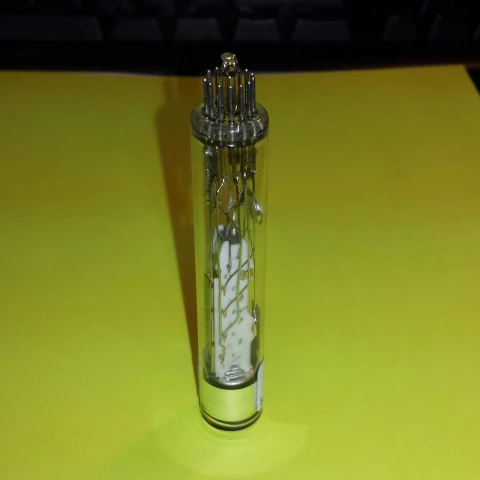Description
The 9902B Photomultiplier Tube is an advanced optical sensor designed for precision and reliability in various scientific applications. With a diameter of 38 mm (1.5 inches), this photomultiplier features an end window construction that houses a bialkali photocathode, enhancing its sensitivity to green light. The tube is equipped with 10 high-gain, high-stability SbCs dynodes, which are linearly focused to ensure excellent linearity and timing performance. This design makes the 9902B an ideal choice for experiments requiring accurate detection and measurement of light.
One of the standout characteristics of the 9902B is its impressive spectral response. The photomultiplier offers a spectral range from 290 nm to 680 nm, where the quantum efficiency exceeds 1% of the peak, ensuring reliable performance across a wide spectrum. The window is constructed from borosilicate, with a refractive index of 1.49, further enhancing its optical properties. These features make the 9902B well-suited for applications in high-energy physics, where precise photon detection is crucial.
In terms of performance, the 9902B demonstrates remarkable stability and resolution. It boasts a quantum efficiency of 28% at peak, with a luminous sensitivity of 100 µA/lm. The photomultiplier also exhibits excellent pulse height resolution and single electron response (SER), crucial for detailed and accurate measurements. The dark current is minimal, ensuring low noise interference in sensitive experiments. Moreover, the 9902B is designed to withstand various environmental conditions, with a wide operating temperature range and resistance to magnetic fields, making it versatile for use in diverse research settings.
38mm Photomultiplier Tube 9902B with Enhanced Green Sensitive Bialkali Photocathode
Specifications
| PMT Type: | PMT (photomutiplier tube) |
|---|---|
| Wavelength Of Max Response: | 400 nm |
| Wavelength Range: | 290 – 680 nm |
| Rise Time: | 3 ns |
| Active Diameter (mm): | 32 |
| Quantum Efficiency At Peak (%): | 28 |
| Pulse Height Resolution: | Single Electron Peak to Valley Ratio 2 |
| Weight (g): | 60 |
Features
- Enhanced Green Sensitive Photocathode: The 9902B features a bialkali photocathode for superior green sensitivity.
- High Gain and Stability: Equipped with 10 high-gain, high-stability SbCs dynodes of linear focused design, ensuring excellent linearity and timing.
- Wide Spectral Range: Spectral range from 290 to 680 nm with a refractive index of 1.49.
- High Quantum Efficiency: Quantum efficiency at peak is 28% with a luminous sensitivity of 100 µA/lm.
- Versatile Applications: Suitable for high energy physics studies and a wide range of other applications.
- Good Pulse Height Resolution: Offers good single electron resolution (SER) and pulse height resolution.
- Excellent Stability: Robust performance with minimal dark current at 20 ºC.
- Magnetic Field Sensitivity: Output decreases by 50% at a field strength of 1.3 x 10-4 T in the most sensitive direction.
- Fast Timing: Multi-electron rise time of 3.5 ns and single electron rise time of 3 ns, ensuring quick response.
- Compact and Lightweight: Weighs only 60 g, making it easy to integrate into various setups.
- Robust Maximum Ratings: Withstands up to 100 µA anode current and 150 µA cathode current with a maximum gain of 106.
Applications
- High Energy Physics Studies: Excellent gain and resolution for particle and radiation detection.
- Scintillation Detection Systems: Compatible with NaI(Tl) scintillators for nuclear and medical imaging.
- Low-Light Level Detection: Ideal for photon counting and time-correlated single-photon measurements.
- Pulse Height Spectroscopy: Supports good resolution and linearity for precise spectral analysis.
- Time-Resolved Experiments: Fast rise time and jitter performance for accurate time-based studies.
Frequently Asked Questions
What is the 9902B Photomultiplier Tube?
What are the features of the 9902B Photomultiplier Tube?
What are the applications of the 9902B Photomultiplier Tube?
What are the typical voltage gain characteristics of the 9902B Photomultiplier Tube?
What is the datasheet for the 9902B Photomultiplier Tube?
Similar Products
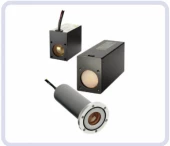
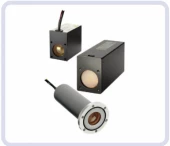
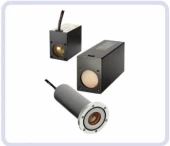
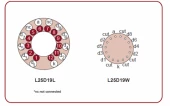
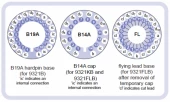
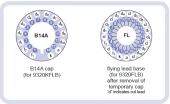
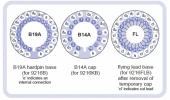





Your inquiry has been received.
Create an account by adding a password
Why create an account?
- Auto-complete inquiry forms
- View and manage all your past messages
- Save products to your favorites
- Close your account anytime — no hassle
